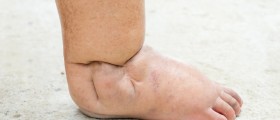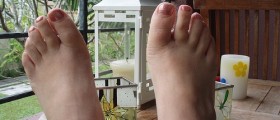
Walking is one of the best possible physical activities for seniors. In fact, seniors who walk regularly have decreased chances of suffering from illnesses like heart disease, osteoarthritis, high blood pressure, obesity and diabetes. Therefore, walking for about 30 minutes every day can keep you healthy and happy.
Benefits of Walking
Walking on daily basis is an excellent form of physical activity since it can be done anywhere at any possible time. Starting an exercise program may make seniors feel uneasy due to the fact that they might fear injuries. However, walking is a low-impact activity which is safe, cheap and easy. Thus, you have nothing to worry about and you can enjoy walking freely. Nevertheless, you have to be careful about certain things since some factors may easily lead to injuries during walking too. These are mainly related to proper style of walking and adequate equipment for this sport.
How to Go Walking
First and foremost, you should choose the right shoes for you. Basically, once you decide to start walking, you need to get yourself a pair of shoes which are comfortable, supportive and bending solely at the toe part. When you try a pair of shoes out, make sure that their sides are stable too. Also, try bending the shoe and fold it in half. If this is possible, skip that model. Finally, once you try a pair on, try moving your toes. There should be enough space for this, without the foot leaving the heal spot.
As far as the size of the shoes is concerned, you need to have your feet properly measured since your size might have changed over the years. Also, our feet tend to swell a bit during the afternoon. Thus, buy your shoes then, avoiding mismatching of the size.
Once you start your walking routine, keep it slow and steady, starting with only 15 minutes of this activity, gradually advancing over time. The surface beneath your feet should be soft and flat. So, the best possible choice for walking is a dirt path. Later, when you develop your stamina and flexibility, you can include uneven tracks and hills into the walking area.
Do not forget to warm up before walking. Yet, do not overdo your stretching either. Rather, do this slowly and carefully, preventing injuries from happening later. Stay home when it is cold, damp or wet outside.
Once your walking session finishes, check your feet for any injuries or other problems, reacting timely in case you find something.
As for proper socks, avoid thick cotton ones. Choose wool or synthetic socks instead. Finally, walk in well illuminated areas, where everything is visible and you have low chances of falling, stumbling onto something or getting injured. If you happen to experience pain or discomfort, take a couple of days off and return to walking once you recover.

















Your thoughts on this
Loading...